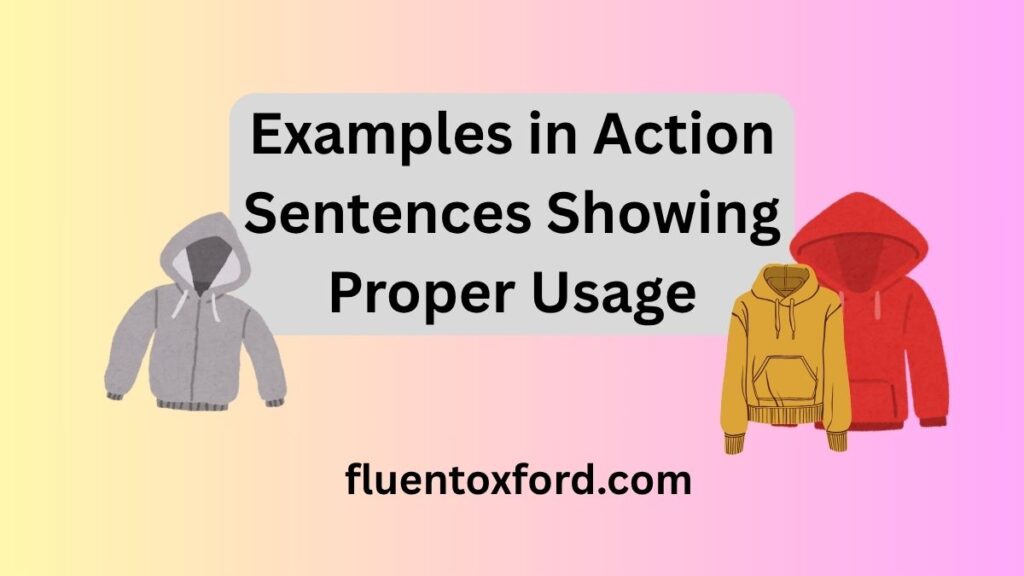Hoodie or Hoody the Right Spelling refers to the ongoing consideration of which form—“hoodie” or “hoody”—is more accurate, appropriate, and widely recognized. It highlights the subtle differences in spelling that can affect communication, style, and understanding across English varieties. The phrase underscores the importance of choosing a form that aligns with context, formality, and regional preferences.
Discovering whether “hoodie” or “hoody” is the Right Spelling is more than just a linguistic quirk; it’s a window into how a simple piece of clothing can reflect culture, fashion, and tradition. Whether you’re a style-savvy person who wants to use the most appropriate spelling or a writer who aims to communicate more effectively, this small variation adds a charming twist to the way we talk about hooded tops.
Exploring Hoodie or Hoody the Right Spelling further reveals a rich blend of history, usage, and practicality. The preferred form typically depends on context, formality, and personal style, making it a perfect reflection of the flexible and evolving nature of the English language.
What Exactly Is a Hoodie (or a Hoody)?
At its core, a hoodie is a piece of casual attire—a hooded sweatshirt made from soft materials like cotton or a cotton blend.
It typically has
- A hood: To keep your head warm and sheltered from chilly conditions.
- Drawstrings: To adjust the tightness of the hood.
- A kangaroo pocket: A large pocket at the front, perfect for warming hands or stashing small items.
A hoodie is comfort wear—it’s designed for relaxation, practicality, and a stylish, effortless look.
Some hooded clothing is lightweight for wearing indoors, while heavy hooded sweatshirts are perfect for staying warm during cold-weather months.
Hoodie vs. Hoody — Are They Actually Different?
Here’s a key point you might be wondering about:
Hoodie vs. hoody — is there a real difference between the two terms?
The short answer is they’re the same piece of clothing.
The variation in spelling comes from regional preferences, slang terminology, and letter change (y to i).
Some people—particularly in British and Australian English—prefer “hoody” (with a “y”) in casual contexts.
Meanwhile, “hoodie” (with “ie”) has become the more standard spelling, especially in American English.
Historical Background—Where Did It All Begin?

The hooded sweatshirt traces its roots back to medieval Europe, when monks and workers wore hooded garments for warmth and anonymity.
This piece of hooded clothing remained a mainstay in workwear and casual attire through the years.
- 1930s: The modern hoodie was first manufactured by Champion USA for freezing warehouse workers in upstate New York.
- 1970s: It crossed over into popular culture—worn by athletes, graffiti artists, and people from all walks of life.
- 1980s: The hoodie became a symbol of youth culture, particularly within hip-hop, skate, and punk scenes.
Today, the hoodie is a global icon, a piece of comfort wear that resonates across generations.
Regional Preferences—USA vs UK vs Australia
The spelling hoodie dominates in the USA and much of North America.
Meanwhile:
- British English: “Hoody” with a “y” is frequently used in a more casual context.
- Australian English: Australians use both, although “hoodie” is more standard.
This variation highlights how region, culture, and lifestyle influence the words we use.
Hoodie vs. Hoody—SEO and Search Demand (Using Real Data)
If you’re writing blogs or selling hooded clothing online, choosing the right spelling matters for SEO.
Here’s a snapshot of search popularity (using Google Trends and search data from Semrush) to illuminate this:
| Hoodie | Hoody | |
| USA (searches/mo) | 135,000 | 18,200 |
| UK (searches/mo) | 50,000 | 9,500 |
| Australia (searches/mo) | 10,000 | 2,500 |
| Global (search trends) | Higher | Lower |
✅ Hoodie is far more popular in search, which makes it a smarter SEO choice for blogs, product descriptions, and online stores.
Pluralization Rules—Hoodie, Hoodies, or Hoody, Hoodys?
Some people find plurals confusing.
Here’s a clear breakdown:
✅ Hoodie (plural: hhoodies)—this) — this is the standard form in the USA and most of the world.
✅ Hoody (plural: hoodys)—this variant is less frequently used and may be considered a casual or informal spelling).
🚀Tip: If you’re writing SEO content or selling products online, stick with “hoodie” and “hoodies” for clarity and search visibility.
Examples in Action—Sentences Showing Proper Usage

Here are a few short, clear sentences to show you how to use these terms in context:
🔹 Sentences with “Hoodie”
• I put on my hoodie after jogging in the park.
• She chose a black hoodie for her birthday gift.
• My hoodie kept me warm all evening.
• He forgot his hoodie at home this morning.
• The hoodie has a small logo on the pocket.
• I love wearing a hoodie when it’s chilly.
• His hoodie is made of soft cotton.
• The hoodie fits him perfectly.
• She washed her hoodie last weekend.
• Everyone wants a comfortable hoodie these days.
🔹 Sentences with “Hoody”
• I bought a new hoody from the store.
• She prefers wearing a hoody over a sweater.
• His hoody is a bit large but very comfortable.
• The hoody kept me warm during the match.
• My friend left his hoody in the gym.
• I like the color of this hoody.
• Her hoody has a stylish logo on the back.
• The hoody feels soft against the skin.
• He chose a green hoody for the trip.
• Everyone complimented her new hoody today.
🔹 Sentences with “Hoodies”
• I have a collection of hoodies in my wardrobe.
• She sells hoodies online in different colors.
• His hoodies are all comfortable and warm.
• The hoodies were a perfect match for the team.
• My friends love wearing hoodies together.
• We bought hoodies on our vacation.
• The hoodies come in many sizes and styles.
• All the hoodies were made from cotton.
• He designed hoodies with a custom logo.
• There are hoodies for everyone in this store.
Summary—Which Should You Use?
If you’re unsure which spelling to use, “hoodie” is your safest bet.
It’s more universal, popular, SEO-friendly, and recognized across the USA, UK, and Australia.
“Hoody” isn’t necessarily incorrect—it’s just less frequently used and a bit more casual or informal.
✅ Final Tip:
For blogs, online stores, and SEO content, choosing Hoodie will help you connect with a wider audience.
Summary Table—Hoodie vs. Hoody at a Glance
| Hoodie | Hoody | |
| Meaning | Hooded sweatshirt | The same, casual variant |
| Regional | USA, universal | British, Australian, less formal |
| Plural | hoodies | hoodys |
| SEO | Higher search volume | Lower search volume |
| Standard | Standard, recognized | Less frequently used, more casual |
Why It All Matters—Comfort, Culture, and Communication

Ultimately, whether you say “hoodie” or “hoody,” you’re referring to a piece of clothing that has become a universal symbol of comfort, style, and casual culture.
- It’s a wardrobe staple for people of all ages.
- It crosses borders, generations, and subcultures.
- It lets you express yourself, stay comfortable, and connect with a rich tradition—all in a simple piece of hooded clothing.
Key Points
So, when choosing your spelling, remember:
✅ Hoodie: more universal, SEO-friendly, standard in USA
✅ Hoody: a casual variant, more British or Australian in style
Whatever you call it, this comfortable piece of casual attire has a rich history and a huge following.
From the freezing docks of 1930s America to today’s fashion scene, the hoodie—or hoody—has kept us warm, stylish, and comfortable.
🚀Tip (for SEO and blogs):
If you want to maximize visibility and connect with a broad, international audience, use “hoodie..”
Save “hoody” for more casual, local, or specialized content.
Conclusion
Hoodie or Hoody the Right Spelling is a small but interesting topic. It shows us how English words can have different forms and meanings. The main spelling is “hoodie.” It is more popular and more formal. But “hoody” is also correct. It is just a more casual way to write it. So when we use these words, we can choose the spelling that feels right for us.
Hoodie or Hoody the Right Spelling teaches us about style, context, and preference. Whether we use “hoodie” or “hoody” depends on where we are and who we are talking to. The most important thing is that everyone knows we are referring to a comfortable hooded top. So we should not stress much about spelling. It’s all about feeling comfortable and choosing the form we like best.
FAQs
❓ Is “hoodie” or “hoody” more correct?
✅ “Hoodie” is more popular and widely recognized, especially in the USA and online.
“Hoody” is a less frequently used variant, mainly in British and Australian English.
❓ Why are there two different spellings?
✅ The variation comes from regional preferences and casual spelling trends.
Both are correct, but “hoodie” has become more standard.
❓ Which spelling is better for SEO?
✅ “Hoodie” performs much better in search rankings and search volume.
If you’re writing blogs or selling products, it’s smarter to use “hoodie.”
❓ Is a hoodie a kind of sweatshirt?
✅ Yes—a hoodie is a hooded sweatshirt, typically made from cotton or a cotton blend and designed for casual wear and warmth.
❓ Are hoodies still in style in 2025?
✅ Absolutely! Hoodies remain a fashion staple, worn by people of all ages and genders, and frequently appear in designer collections and streetwear trends.

As an admin at Fluent Oxford, Maida Queen is the driving force behind our vibrant learning community. With a deep passion for English language education, she ensures that our platform remains a dynamic, engaging, and supportive space for learners worldwide.
Maida expertly manages content, assists users with their grammar and fluency queries, and fosters an interactive environment where learning feels effortless and enjoyable. Whether you need guidance, motivation, or just a friendly face in the Fluent Oxford community, Maida is always there to help you reach your English language goals.








